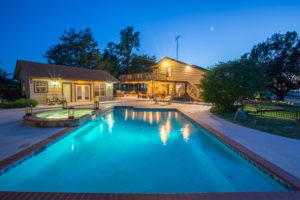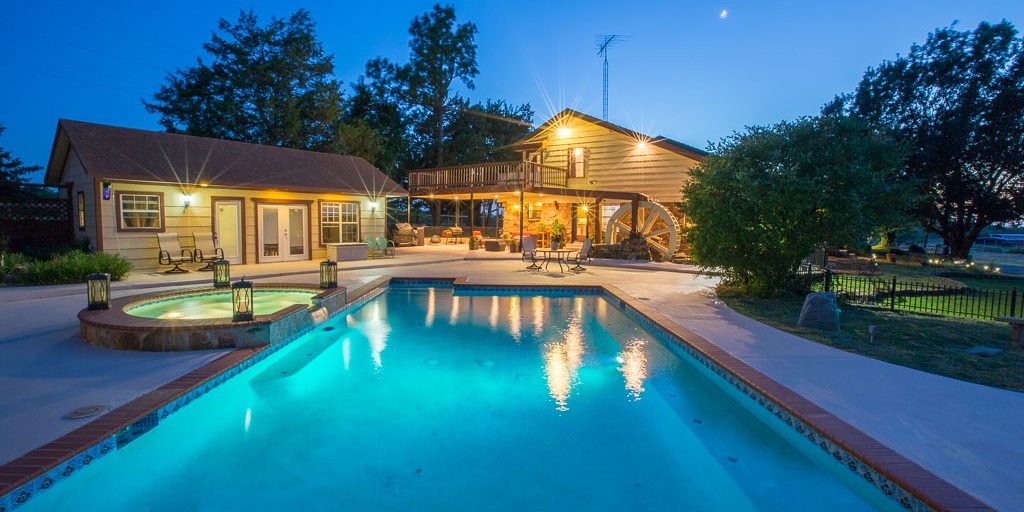As a photographer, I quite often get asked, “When’s the best time of day to shoot?” Well, as many people know the standard response of must photographers is the golden hour. If you’re unfamiliar with the golden hour, it’s the hour before and up to sunset. You usually get some of the most evenly lit, warm photographs when the sun is providing enough light to shoot but not so much to have harsh shadows seen during the day. Good photographers know how to effective incorporate sun flare and backlit nature or utilize the sun as a hair light when shooting people. That’s the typical trademark of a good natural light photographer. But what do you do after the sun is down? Most of us pack up and say, “Shoot’s over, we’re out of light!”
The Twilight Difference
 When shooting stationary items, especially real estate, I love shooting during twilight. Especially, if the home or structure has lots of windows or lights. Typically, the evenings yield lower winds, more interesting skies and a calm peace that is sometimes lacking in the day…or at least harder to communicate in a 12 pm high noon image. This is why you see a lot of luxury estates and high end vacation home shots done in the calm twilight period. It’s short but beautiful. So, next time your ready to pack up and leave, slow down your shutter, throw that camera on a tripod and try some bracketed shots for creating some high dynamic range (HDR) photos.
When shooting stationary items, especially real estate, I love shooting during twilight. Especially, if the home or structure has lots of windows or lights. Typically, the evenings yield lower winds, more interesting skies and a calm peace that is sometimes lacking in the day…or at least harder to communicate in a 12 pm high noon image. This is why you see a lot of luxury estates and high end vacation home shots done in the calm twilight period. It’s short but beautiful. So, next time your ready to pack up and leave, slow down your shutter, throw that camera on a tripod and try some bracketed shots for creating some high dynamic range (HDR) photos.
I’ve heard of HDR, but what is that?
If you’ve been shooting real estate or architectural photography for a while, you are likely very familiar with HDR or high dynamic range photos. If you’re not familiar with HDR, then I’ll fill you in with a very simple answer. When you expose a photo, your camera will collect information for every pixel in the frame. The problem is that sometimes you are shooting in an environment where there is a really bright area and perhaps a really dark area. Your camera will do it’s best to find the middle ground but quite often detail is lost in the brightest parts of the image and the darkest parts of the image. Your cameras ability to record information for each shade and color you see from the brightest to the darkest is it’s dynamic range. To increase dynamic range, you can take three shots (bracketed shots) where each shot as a different exposure time value. For instance, you can have a correct exposure and an under and over exposure. This allows for the processing of an image with higher dynamic range. Some new cameras can processes HDR internally, however it is more common to use computer software for the functionality for greater control.






